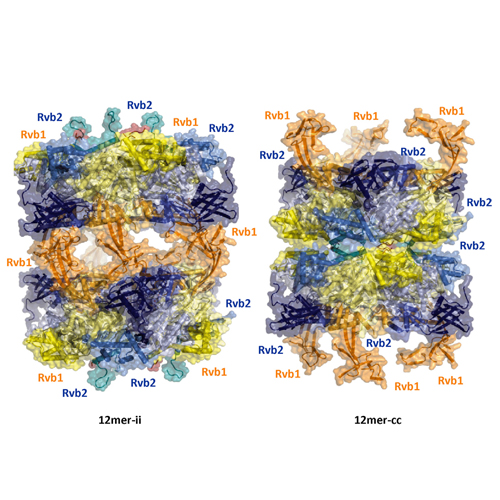Structural Basis for Dodecameric Assembly States and Conformational Plasticity of the Full-Length AAA+ ATPases Rvb1·Rvb2
03-Mar-2015
Structure, 2015, DOI: http://dx.doi.org/10.1016/j.str.2014.12.015, Volume 23, Issue 3, p483–495 published on 03.03.2015
Structure, online article
As building blocks of diverse macromolecular complexes, the AAA+ ATPases Rvb1 and Rvb2 are crucial for many cellular activities including cancer-related processes. Their oligomeric structure and function remain unclear. We report the crystal structures of full-length heteromeric Rvb1·Rvb2 complexes in distinct nucleotide binding states. Chaetomium thermophilum Rvb1·Rvb2 assemble into hexameric rings of alternating molecules and into stable dodecamers. Intriguingly, the characteristic oligonucleotide-binding (OB) fold domains (DIIs) of Rvb1 and Rvb2 occupy unequal places relative to the compact AAA+ core ring. While Rvb1’s DII forms contacts between hexamers, Rvb2’s DII is rotated 100° outward, occupying lateral positions. ATP was retained bound to Rvb1 but not Rvb2 throughout purification, suggesting nonconcerted ATPase activities and nucleotide binding. Significant conformational differences between nucleotide-free and ATP-/ADP-bound states in the crystal structures and in solution suggest that the functional role of Rvb1·Rvb2 is mediated by highly interconnected structural switches. Our structures provide an atomic framework for dodecameric states and Rvb1·Rvb2’s conformational plasticity.











